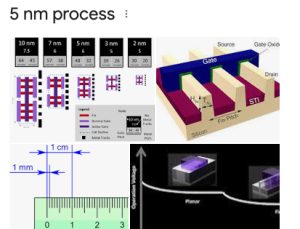Chinese semiconductor factory Semiconductor Manufacturing International Corporation (SMIC) may have surpassed the 5nm process barrier despite U.S. restrictions — by developing a cutting-edge chip for Huawei. This breakthrough is a significant step forward for both SMIC and Huawei amidst ongoing geopolitical tensions and technological competition. As the demand for advanced chips continues to rise, this development puts the Chinese tech giants in a stronger position to compete globally and reduce their dependence on U.S. suppliers.
Earlier this year, the firm commenced mass production of Huawei’s HiSilicon Kirin 9000S processor utilizing its second-generation 7mm process technology. As a result, Huawei was able to significantly boost the performance and efficiency of its devices equipped with this high-end chipset. This collaboration has demonstrated the increasing capabilities of semiconductor companies to deliver cutting-edge technology, and it is expected to pave the way for further advancements in the industry.
Currently, Huawei’s website features an eight-core Arm-based HiSilicon Kirin 9000C processor fabricated on a 5nm-class process node for the Qingyun L540 laptop. The general-purpose cores of the Kirin 9006C are listed as having a capacity of up to 3.13 GHz, comparable to the TSMC N5-based Kirin 9000 SoC launched by Huawei in late August 2020. This demonstrates Huawei’s commitment to innovation and self-reliance as the Chinese tech giant continues to navigate global challenges and drive technological advancements in the industry.
Huawei and SMIC collaboration speculation
The similarities between the two chips imply that Huawei might have collaborated with SMIC to manufacture the processors. This collaboration could be a strategic move for Huawei to reduce its dependency on foreign chip manufacturers and strengthen its foothold in the domestic market. As China continues to invest heavily in its semiconductor industry, such partnerships with local manufacturers like SMIC would be mutually beneficial in accelerating technological advancement and market growth.
Multi-patterning techniques for intricate designs
Huawei and SMIC use these methods to divide complicated patterns into simpler patterns printed in sequence for improved precision. By utilizing this approach, manufacturers can create intricate and precise designs with reduced errors and higher efficiency. This subsequently leads to an enhanced final product, as the simpler patterns are easier to control and manage during printing.
Featured Image Credit: Wikipedia; Thank you!
The post Chinese SMIC surpasses 5nm barrier with Huawei chip appeared first on ReadWrite.


Comentarios recientes